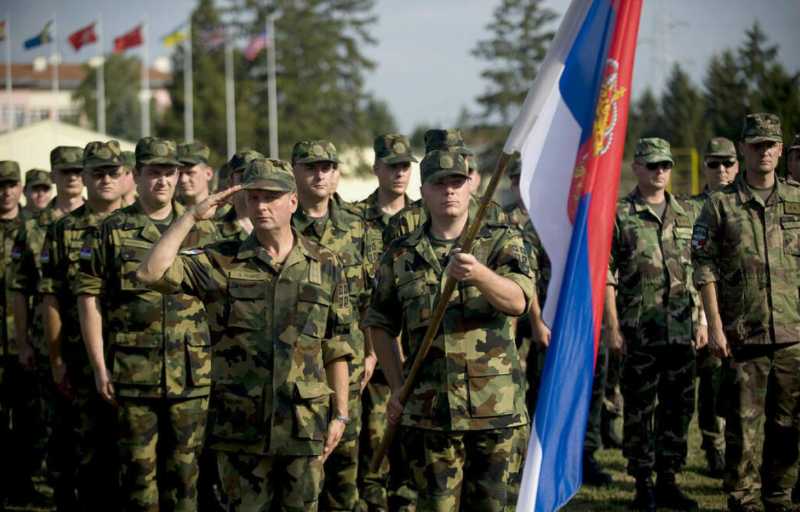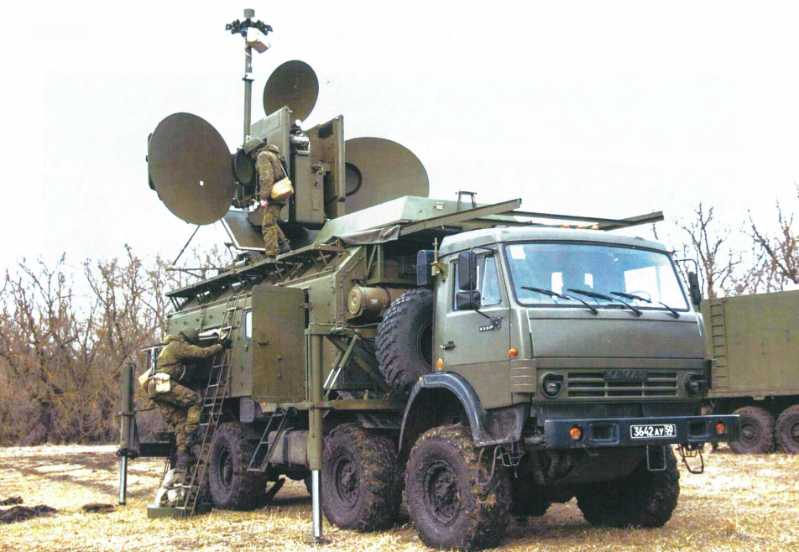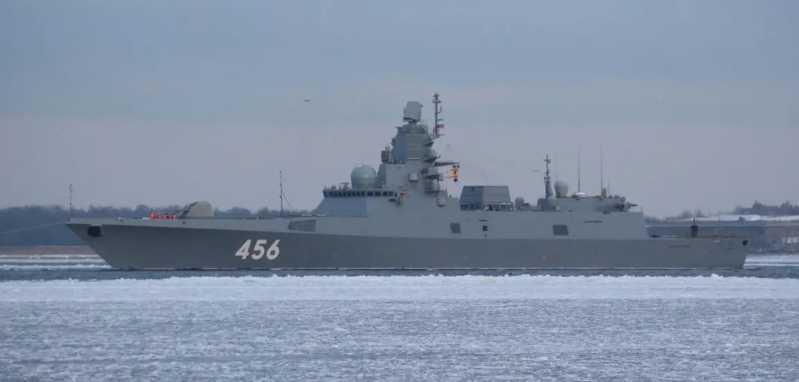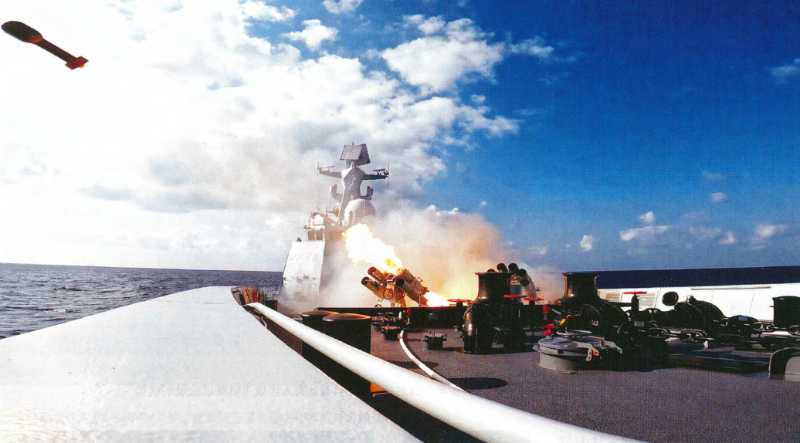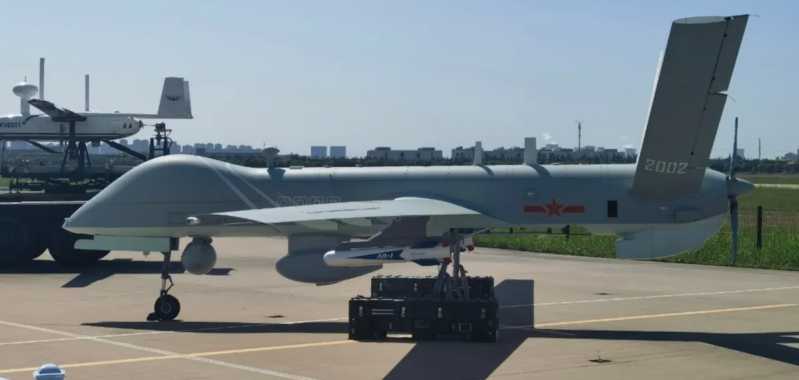The size of the army is limited
The modern Serbian army can be traced back to the Yugoslav People’s Army. In 1991, Yugoslavia gradually disintegrated. In 1992, Serbia and Montenegro formed the Federal Republic of Yugoslavia (hereinafter referred to as the Federal Republic of Yugoslavia). The Yugoslav People’s Army it received was renamed the Federal Republic of Yugoslavia Army. At this time, the Kosovo issue had already emerged. In 1996, the Kosovo Albanian militia armed forces-the "Kosovo Liberation Army" was established and began to fight for independence by force. In February 1998, the "Kosovo Liberation Army" clashed with the Federal Republic of Yugoslavia Army, and the regional situation continued to escalate. At 8 pm on March 24, 1999, local time, NATO launched an air strike on the Federal Republic of Yugoslavia without the authorization of the United Nations, and the Kosovo War broke out. At that time, the Federal Republic of Yugoslavia had a total of 114,000 active soldiers and 400,000 reserve soldiers, with complete land, sea and air forces, and relatively advanced equipment. However, after launching the Kosovo War, NATO did not use ground forces, but used the Air Force and naval carrier-based aviation to carry out large-scale air strikes on the Federal Republic of Yugoslavia, which made the strong Federal Republic of Yugoslavia’s army completely useless, and the Federal Republic of Yugoslavia’s navy and air force had almost no ability to fight back against the NATO navy and air force. After 78 days of large-scale air strikes, the Federal Republic of Yugoslavia suffered heavy losses and its army had to withdraw from Kosovo.
After the Kosovo War, Montenegro also had the intention to separate. According to Montenegro’s request, the Federal Republic of Yugoslavia was renamed Serbia and Montenegro on February 4, 2003, and the Federal Republic of Yugoslavia’s army was renamed the Serbia and Montenegro Army. Three years later, on June 3, 2006, the Republic of Montenegro declared independence. On June 5 of the same year, the Republic of Serbia announced that it would inherit the international legal status of Serbia and Montenegro. At the same time, Serbia formed the Serbian Army (hereinafter referred to as the Serbian Army) on the basis of receiving the original Serbia-Montenegro Army, and the Army Day was set on April 23. According to the Serbian Constitution, the President is the supreme commander of the Serbian Army, the Ministry of Defense is the military leadership of the armed forces, and the General Staff is the military command of the Serbian Army.
The Serbian Army initially implemented a military service system that combined contract military service and compulsory military service. Citizens over the age of 18 are obliged to serve. The term of compulsory military service is 6 months, and the term of contract military service is 3 years. After the expiration, the contract can be renewed according to the situation. All citizens who have served in the military are included in the reserve. In 2010, Serbia abolished the compulsory military service system and changed it to a contract military service system. However, the contract system requires more money to support the troops, but Serbia’s economic situation is not good, which forces it to continuously reduce the size of the army. At present, the Serbian Army has only 22,500 active soldiers, including 4,200 officers, 6,500 non-commissioned officers, 8,200 contract soldiers, and 3,500 voluntary civilians. In addition, Serbia has 62,000 reserve soldiers. Serbia’s military expenditure is not high, averaging about $1.5 billion per year in 2021 and 2022, accounting for about 2.49% of its GDP.
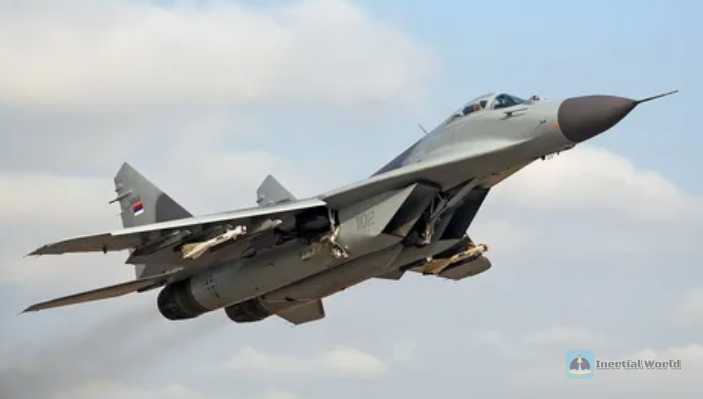
Due to the separation of Montenegro, Serbia lost its access to the sea, and now the Serbian army only has the Army, Air Force and Air Defense Force. The Army has 13,500 troops. It consists of 6 brigades, 6 independent battalions directly under the Army Command, a technical overhaul institute and a multinational operations training center. The Army’s backbone combat forces are 4 brigades (1st, 2nd, 3rd and 4th Brigades), each of which consists of 11 battalions, including 1 command battalion, 1 armored battalion, 2 mechanized battalions, 2 infantry battalions, 1 self-propelled artillery battalion, 1 self-propelled multiple rocket launcher battalion, 1 air defense battalion, 1 engineer battalion and 1 logistics battalion. The other two brigades are the mixed artillery brigade and the inland flotilla (brigade level). Among them, the mixed artillery brigade is composed of the command battalion, the 1st howitzer battalion, the 2nd howitzer battalion, the 3rd cannon battalion, the 4th cannon battalion, the self-propelled howitzer battalion, the mixed missile artillery battalion, and the 69th logistics battalion: the inland flotilla is composed of the command company’s 1st inland detachment, the 2nd inland detachment, the 1st pontoon battalion, the 2nd pontoon battalion, and the logistics company. The 6 independent battalions directly under the army headquarters are: the 3rd military police battalion, the 5th military police battalion, the 246th chemical defense battalion, the 21st signal battalion, the T-72M tank battalion, and the armored reconnaissance battalion.
The Serbian Air Force and Air Defense Force have more than 5,000 troops, including 4 brigades, 2 independent battalions directly under the Air Force and Air Defense Force Command, as well as the Aviation Overhaul Institute and the Aviation Medical Institute. In peacetime, it is responsible for managing airspace and national air defense, ensuring the tactical transportation of the army; in wartime, its mission includes seizing air superiority, protecting important civilian and military targets from air attacks, and providing aviation fire support for the army.
There are three air force bases, namely Batanica Air Force Base, Radvić Air Force Base and Niš Air Force Base. The air defense forces are mainly deployed in Pančevo Kragujevac, Novi Sad, Djakovo, Zuce and other bases, and the long-range surveillance radar station is located in Multnica. The four brigades of the Serbian Air Force and Air Defense Force are the 204th Aviation Brigade deployed at Batanica Air Force Base (comprising the 101st Fighter Squadron, the 138th Transport Squadron, the 252nd Training Squadron, the 890th Mixed Helicopter Squadron, the 177th Air Defense Artillery Missile Battalion, the 24th Aviation Technical Battalion, and the 17th Air Base Security Battalion); the 98th Aviation Brigade deployed at Radwić Air Force Base (comprising the 241st Fighter-Bomber Squadron, the 714th Anti-Armor Helicopter Squadron); the 119th Mixed Helicopter Squadron, the 353rd Anti-Aircraft Squadron, and the 714th Anti-Armor Helicopter Squadron deployed at Niš Air Force Base. Reconnaissance Squadron, 98th Air Defense Artillery Missile Battalion, 98th Aviation Technical Battalion, 98th Air Base Security Battalion, 161st Air Base Security Battalion deployed at Niš Air Base); 250th Air Defense Missile Brigade (command company deployed in Belgrade, 1st Air Defense Missile Battalion deployed in Zuce, 2nd Air Defense Missile Battalion deployed in Pančevo, 3rd Air Defense Missile Battalion deployed in Jakovo, 230th Air Defense Self-Propelled Missile Battalion deployed in Novi Sad, 240th Air Defense Self-Propelled Missile Battalion deployed in Kragujevac); 126th Air Surveillance, Early Warning and Guidance Brigade (command company deployed in Belgrade, 20th Air Surveillance, Early Warning and Guidance Battalion deployed at Batanica Air Base, 31st Air Surveillance, Early Warning and Guidance Battalion deployed at Radvic Air Base. Aviation Maintenance and Supply Battalion deployed at Batanica Air Base).
Other units of the Serbian Army include the special forces of the Training Command directly under the General Staff (including the 63rd Airborne Brigade and the 72nd Special Operations Brigade), the Guard Force, the Signal Brigade, the Central Logistics Base, the 224th Electronic Operations Center, the Technical Testing Center, the Peacekeeping Operations Center and the General Directorate of the Gendarmerie (including the Criminal Investigation Brigade and the Gendarmerie Special Operations "Cobra Detachment").
Although the Serbian special forces are organized into two brigades, the total strength is only more than 1,500 people, including 700 people in the 63rd Airborne Brigade and 800 people in the 72nd Special Operations Brigade. The predecessor of the 63rd Airborne Brigade was the 1st Airborne Battalion of the Yugoslav People’s Army established in 1944. After that, the Yugoslav People’s Army expanded into the 63rd Airborne Brigade based on the 1st Airborne Battalion. After the disintegration of Yugoslavia, the 63rd Airborne Brigade The airborne brigade belonged to the Federal Republic of Yugoslavia Army, and later became a rapid-response special operations force of the Serbian Army. The weapons of the brigade are all imported from Western countries. Each paratrooper must parachute at least 14 times a year. The 72nd Special Operations Brigade is a special forces unit organized in a modular manner. Its main tasks include designing, training and conducting special operations, counter-insurgency and counter-ninja, reconnaissance and intelligence gathering, and can perform special operations missions under various terrains, weather and combat conditions. The 72nd Special Operations Brigade includes: headquarters, command battalion "Falcon" special operations battalion, "Gripen" special operations battalion, logistics company and military police platoon. The weapons of the brigade are imported from Western countries like the 63rd Airborne Brigade. The "Cobra" detachment is mainly engaged in counter-terrorism operations. It has only 200 troops, but its style is strong and can fight tough battles.
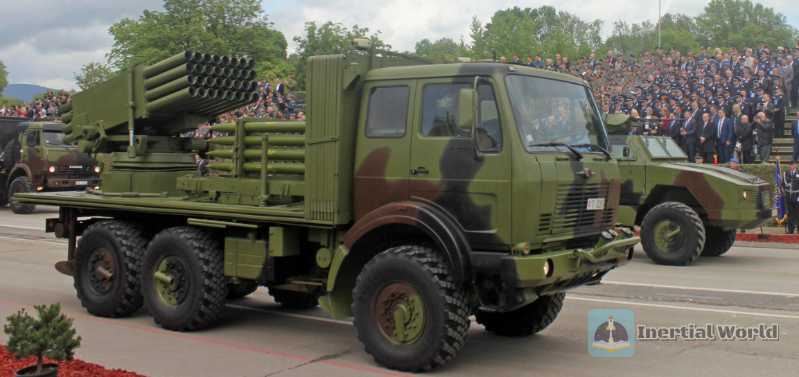
Due to the tense situation in Kosovo, Serbian President Vucic announced on December 29, 2022 that the special forces will be expanded to three times the original strength, and the total force is planned to increase to 5,000. The order to expand the special forces is mainly for the 63rd Airborne Brigade and the 72nd Special Operations Brigade, but the "Cobra" detachment is likely to be expanded as a result. It can be seen that once the situation in Kosovo changes, the first to be dispatched will be the Serbian special forces.
Equipment is mainly domestic
The Serbian army’s equipment is relatively mixed, with both domestic equipment and Soviet/Russian equipment, Western and Chinese equipment. Generally speaking, it is mainly Soviet/Russian equipment, and most of its domestic equipment is also improved based on Soviet/Russian weapons and equipment
The Serbian Air Force and Air Defense Force have only 11 MiG-29 fighters. Equipped in the 101st Fighter Squadron, 204th Aviation Brigade. Most of the MiG-29s were upgraded to MiG-29SMs from 2018 to 2021. The biggest change was that the onboard radar was replaced with the NO10M "Beetle"-EM pulse Doppler radar, which enabled the MiG-29SM to engage multiple targets and guide R-77 missiles for beyond-visual-range air combat. In addition, the original RD-33 engine of the MiG-29 was also replaced with the RD-43 engine with a larger thrust-to-weight ratio. Even so, the performance of the MiG-29SM is still far behind other fourth-generation and a half fighters in the world. For example, active phased array radar has become standard equipment on fourth-generation and a half fighters, while the MiG-29SM is still equipped with a pulse Doppler radar. In addition, the air combat system of the Serbian Air Force and Air Defense Force is not complete. In addition, the number of MiG-29s is too small, which makes the Serbian Army’s air combat capability weak.
In addition to the MiG-29, the Serbian Army also has 12 J-22 "Eagle" attack aircraft equipped with the 241st Fighter-Bomber Squadron of the 98th Aviation Brigade. The J-22 attack aircraft is a twin-engine, subsonic, close-range support and tactical reconnaissance aircraft jointly developed by Yugoslavia and Romania in the 1970s. The aircraft is 13.02 meters long, with a wingspan of 9.30 meters, an empty weight of 5,750 kilograms, and a maximum take-off weight of 10.9 tons. Its fixed weapons are two GSh-23L 23 mm cannons, with an external load of 2,800 kg. It can carry laser target indicators, air-to-ground missiles, anti-radiation missiles, anti-ship missiles, BL755 cluster bombs and other weapons for ground attacks, and can also carry AA-2 and AA-8 short-range air-to-air missiles for self-defense.
In addition, the Serbian army also has 4 Mi-35 and 29 SA341H "Gazelle" armed helicopters, of which: Mi-35 and some "Gazelle" are equipped with the 714th Anti-Armor Helicopter Squadron of the 98th Aviation Brigade, and the rest of the "Gazelle" are equipped with the 119th Mixed Helicopter Squadron of the 98th Aviation Brigade. In addition, there are 8 Mi-8 general-purpose helicopters and 5 H145M general-purpose helicopters equipped with the 119th Mixed Helicopter Squadron of the 98th Aviation Brigade, and 5 Mi-17 general-purpose helicopters equipped with the 890th Mixed Helicopter Squadron of the 204th Aviation Brigade. In terms of drones, the Serbian Air Force and Air Defense Force have 9 "Wing Loong" reconnaissance and strike drones, 6 CH-92, 12 domestic Pegaz 011 reconnaissance and strike drones, more than 50 domestic "Sparrow" small reconnaissance drones, and 10 Israeli-made "Orbiter" reconnaissance drones.
The air defense missile systems of the Serbian Air Force and Air Defense Force include: 4 HO-22 long-range air defense missile companies (equipped with the 250th Air Defense Missile Brigade), 1 "Armor" S1 combined missile and artillery air defense company, 8 SA-3 medium-range air defense missile companies, 12 SA-6 medium-range air defense missile companies, 3 PASARS-16 short-range air defense missile companies, 1 SA-13 short-range air defense missile company, 9 SA-9 short-range air defense missile companies, and a large number of SA-7, SA-14SA-16 portable air defense missiles. In terms of technical level, except for the more advanced HO-22, other air defense missile systems are outdated. The early warning surveillance and guidance radars equipped by the Serbian army include: 2 French GM400 long-range radars, 4 CM200 medium-range radars, 16 GM60 short-range radars, 5 American AN/TPS-70 medium-range radars, and 8 Soviet P-12 medium-range radars. Although French and American radars are more advanced than P-12 in technology, if NATO confronts Serbia, these French and American radars will be more easily suppressed.
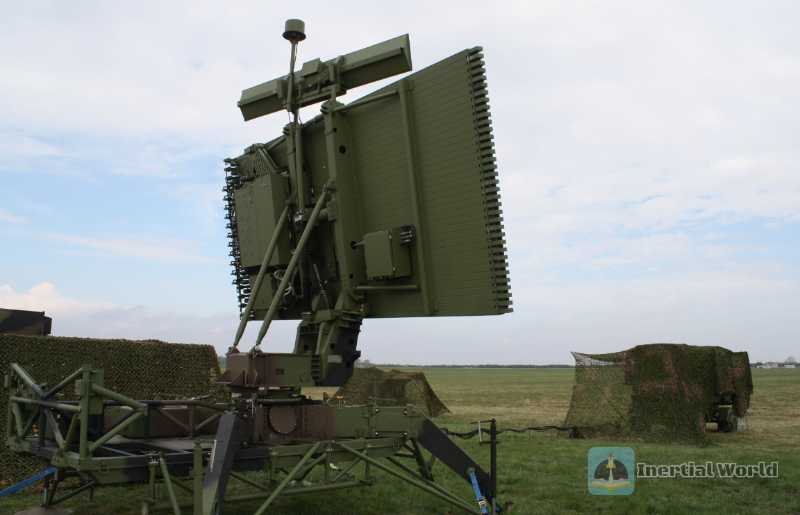
The main combat equipment of the Serbian Army includes 212 M-84 main battle tanks produced during the Yugoslav/Federal Republic of Yugoslavia, 30 T-72B1MS main battle tanks, 320 BVPM-80 tracked infantry fighting vehicles produced during the Yugoslav/Federal Republic of Yugoslavia, 36 "Lazar" wheeled armored vehicles produced in Serbia, 205 various light armored vehicles, 40 US-made "Humvee" high-mobility vehicles, and 48 BOV1 anti-tank missile launchers produced during the Federal Republic of Yugoslavia.
M-84 is a main battle tank improved by Yugoslavia based on the Russian-made T-72M1, with a significant improvement in performance. At present, Serbia has improved the M-84 to M-84AS1, using double-anti-reactive armor to cover the turret and body, and adding a remote control weapon station and a new optoelectronic jamming system. In addition, the commander’s and gunner’s sights and sights have also been upgraded with white light and thermal imaging channels, enabling search and tracking of targets day and night. However, the M-84AS1 was only unveiled in 2020, and the current M-84 has not yet been upgraded on a large scale according to the standards of the M-84 AS1, so there is still a certain gap in performance with the Western M1A2 series and Leopard 2A5/A6/A7.
The Serbian Army’s artillery and rocket launchers include: 18 domestic Nora B-52 155mm vehicle-mounted guns, 72 Soviet-made 2S1 "Carnation" 122mm self-propelled howitzers, 36 domestic Nora M84 152mm towed howitzers, 36 Soviet-made M46 130mm towed cannons, 78 D-30 122mm towed howitzers, 4 M87 262mm long-range multiple rocket launchers produced during the Yugoslav period, 18 M94 128mm multiple rocket launchers produced during the Yugoslav period, 60 M77 128 mm multiple rocket launchers,
There are advantages but more concerns
As the main imaginary enemy of the Serbian army, the Kosovo authorities currently have 5,000 armed personnel, which have been called security forces before. Recently, after the local situation became tense, the Kosovo authorities announced the formal establishment of the army on November 14, 2022, which actually changed the name of the security forces to armed forces. In addition to the existing 5,000 soldiers, the Kosovo authorities also have 3,000 reservists.
In terms of ground equipment, the Kosovo authorities’ armed forces have 55 M1117 "Guardian" armored vehicles, 200 "Humvee" high-mobility vehicles, 350 "Cobra" light motor vehicles produced by Turkey’s Otoka, and a small number of Turkish-made Vuran mine-proof armored vehicles. In 2020, Germany promised to provide Kosovo with 30 Leopard 2 main battle tanks, 50 Weasel infantry fighting vehicles, and 15 Puma infantry fighting vehicles. In 2021, Croatian Defense Minister Mario Banocic also said that he would provide Kosovo with 15 M-84 main battle tanks, 50 armored vehicles, 10,000 AK-47 assault rifles and other weapons. However, Germany and Croatia have not yet fulfilled their promises to the Kosovo authorities. Considering NATO’s current pressure to aid Ukraine, it is unlikely that the two countries’ promises will be implemented in the near future.

In fact, even if the military aid from Germany and Croatia is delivered on time, the Serbian army still has a great advantage when facing the Kosovo armed forces. What really worries Serbia is the NATO forces behind Kosovo. At present, NATO has deployed 3,762 so-called "NATO Peace Implementation Forces" in Kosovo. Although these NATO troops do not have too many heavy weapons, once the local situation changes, the Serbian army will inevitably be cautious when facing these NATO troops.
In addition, the current strategic environment around Serbia is also worse than that in 1999 during the Federal Republic of Yugoslavia. After the separation of Montenegro, Serbia has become a landlocked country. Not only has its territory shrunk, but its population has also dropped to less than 7 million (excluding 2.2 million in Kosovo), and its neighboring countries are basically NATO countries. If NATO decides to intervene in the local situation, its military intervention will be faster and it can attack from multiple directions at the same time, which will make it much more difficult for Serbia to defend itself than during the Kosovo War in 1999.


